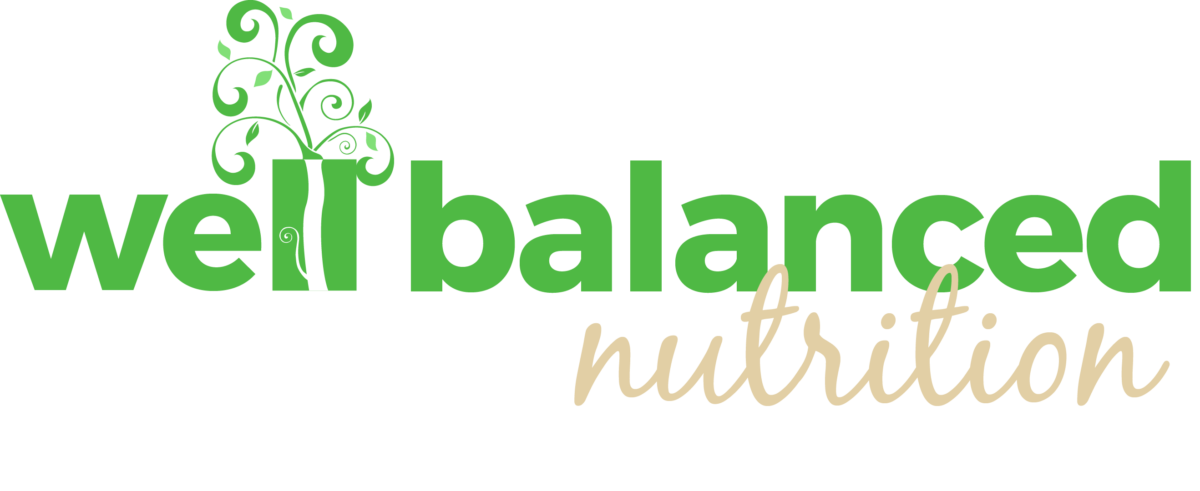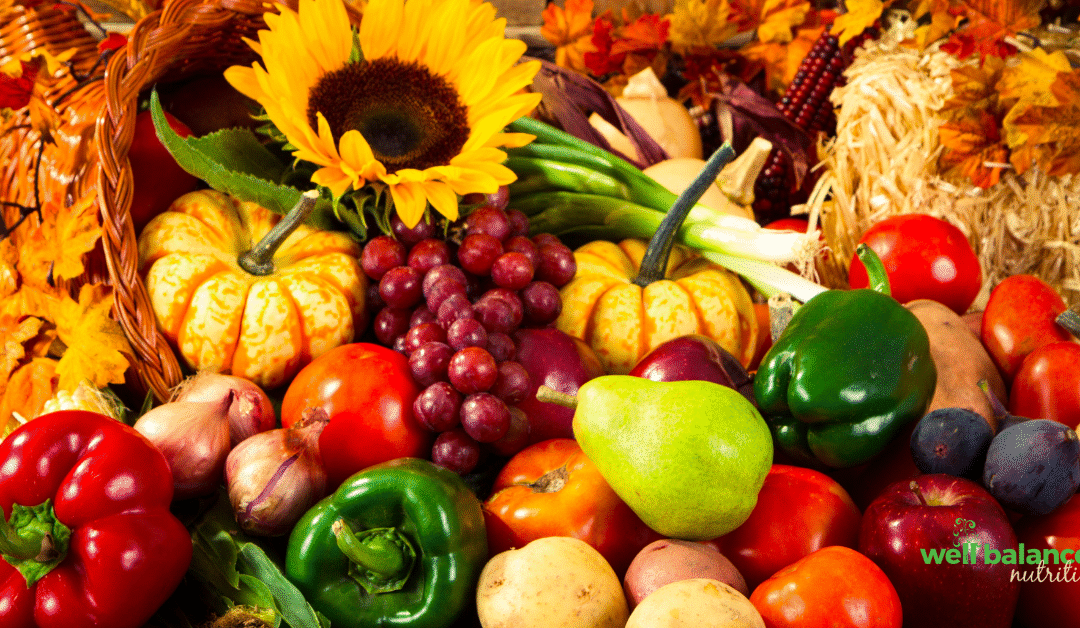Have you been tempted to completely overhaul your pantry by tossing out all the processed foods and keeping only “good, clean foods”? You’re not alone. Maybe it’s the thought of spring cleaning, or perhaps it’s all the buzz about ultra-processed foods in the news that makes you want to clear things out.
Wait. Before you start tossing out every packaged item in your kitchen, hear us out. There’s a better way.
Rather than focusing on eliminating everything but fresh or “clean” foods, we want to guide you through a thoughtful process of curating your kitchen.
A successful pantry refresh doesn’t have to be about strict rules. A more sustainable approach involves carefully choosing what stays and what goes by examining which foods support your health and enjoyment.
Understanding Processed vs. Ultra-Processed Foods
Before we dive in, let’s clarify a few things. The terms “processed” and “ultra-processed” get thrown around a lot, but what do they really mean? Here’s a quick breakdown of how researchers define different levels of food processing:

Image Source: Crimarco, Anthony & Landry, Matthew & Gardner, Christopher. (2021). Ultra-processed Foods, Weight Gain, and Co-morbidity Risk. Current Obesity Reports. 11. 1-13. 10.1007/s13679-021-00460-y.
While headlines about ultra-processed foods can be alarming, it’s important to look at the whole picture. Yes, ultra-processed foods are linked to a higher risk of disease. Research shows that people tend to consume more calories and larger portions of ultra-processed foods than less processed options. But not all ultra-processed foods are the same. While some offer little nutritional value (think chips, soda, and candy), others—like whole wheat bread, canned beans, and ultra-filtered milk —can still be part of a balanced diet. The key is to take a nuanced approach. Instead of labeling all packaged foods as “bad,” consider which ones add value to your diet and which ones might be crowding out more nutrient-dense choices.
The key is to take a nuanced approach. Instead of labeling all packaged foods as “bad,” consider which ones add value to your diet and which ones might be crowding out more nutrient-dense choices.
A Balanced Approach to A Kitchen Refresh
It may sound enticing to follow oversimplified guidelines like, “if it’s in a package, it’s gone” or “if it has more than five ingredients, it’s unhealthy,” but I encourage you to try a more flexible mindset that allows all foods. Before you let that scare you off, let me explain what that means.
You may have heard the phrase all foods fit and wondered, how can that be balanced and nutritious? It doesn’t mean eating anything and everything on impulse. Instead, it’s about making room for both nourishment and enjoyment in a way that supports your overall well-being.
One key to achieving this balance is recognizing the role of satisfaction in your eating habits. When food is both nourishing and enjoyable, you’re more likely to maintain a sustainable and positive relationship with it.
Satisfaction is often overlooked in healthy eating, but it’s essential. With a flexible mindset, you can balance nourishment and satisfaction. Some foods are both nourishing (like the hearty salad you enjoy) and purely enjoyable (like homemade chocolate chip cookies).
If you focus only on eating “clean” and exclude foods you enjoy, your efforts are not likely to last. But when you allow room for treats while making nutritious foods satisfying, you’re more likely to build a positive, lasting relationship with food and a well-balanced diet.
So how much of these fun foods do I allow?
That’s not a question I can answer in a blog post, but there is one thing to consider. Foods that are highly palatable—whether ultra-processed or not—can be easy to overeat, and if you eat them often, it could lead to taking in more than your energy needs or a less-than-ideal intake of some or all nutrients. The goal isn’t to eliminate them but to ensure they don’t displace the nourishing foods your body thrives on.
So with that said, let’s move forward with a flexible mindset and work through these 3 steps to a Spring Kitchen Refresh!
Step 1: Declutter Your Pantry
Start with the obvious: expired foods, duplicate items, and things you no longer use. Then, tackle the trickier decisions by asking yourself these questions:
- Does this food contain high amounts of ingredients I’m trying to cut back on (like sodium or added sugar)?
- Am I eating this because I genuinely enjoy it or just out of habit?
- Could I replace this with a more nutrient-dense option that I enjoy just as much?
- Am I keeping this for sentimental reasons? If so, does it still bring me joy?
- Do I feel empowered by keeping this food in my kitchen?
If you struggle with these decisions, consider working with one of our dietitians for guidance.
Step 2: Stock Up on Nourishing Foods
Once you’ve decluttered, fill your kitchen with foods that nourish and satisfy you. Here are the fundamental nutrients to focus on:
Protein for Sustained Energy and Muscle Support
Protein helps repair tissues, supports muscles, and keeps you full longer. Include protein-rich foods at every meal to help stabilize blood sugar and maintain energy levels.
What to add:
- Animal proteins: Chicken, turkey, fish, eggs, lean beef
- Plant-based proteins: Tofu, tempeh, lentils, chickpeas, black beans, quinoa, edamame
- Dairy and alternatives: Greek yogurt, cottage cheese, unsweetened almond or soy milk
Fiber for Digestive and Heart Health
Fiber supports digestion, helps maintain a healthy weight, and keeps you full longer. Most people don’t get enough fiber, so now is a great time to add more.
What to add:
- Fruits and vegetables: Berries, apples, pears, broccoli, carrots, spinach, kale
- Whole grains: Brown rice, quinoa, oats, whole wheat bread, whole wheat pasta
- Nuts and seeds: Chia seeds, flaxseeds, almonds, walnuts, pumpkin seeds
Healthy Fats for Brain and Heart Health
Healthy fats support brain function, heart health, and overall well-being.
What to add:
- Avocados (on toast, in salads, or blended into smoothies)
- Extra Virgin Olive Oil (for cooking or as a dressing)
- Nuts and seeds (almonds, walnuts, chia, flaxseeds)
- Fatty fish (salmon, mackerel, sardines)
Plants for Nutrients and Antioxidants
Filling your meals with a variety of plants provides essential vitamins, minerals, and antioxidants.
What to add:
- Leafy greens: Kale, spinach, arugula, collard greens
- Cruciferous vegetables: Broccoli, Brussels sprouts, cauliflower, cabbage
- Root vegetables: Sweet potatoes, carrots, beets, turnips
- Fruits: Blueberries, strawberries, oranges, grapefruits
Step 3: Make Simple Swaps
Small changes can make a big difference. Consider swapping:
- Some packaged snacks → Nuts, hummus with veggies, or homemade energy bites
- Sugary drinks → Sparkling water with lemon or herbal tea
- White bread → Whole grain or sprouted bread
- Sugary cereals → Overnight oats with fresh fruit and nuts
Final Thoughts: Embrace Balance, Not Perfection
Refreshing your eating habits isn’t about following strict rules or cutting out foods you love. It’s about being intentional with your choices, tuning into what your body needs, and making space for nourishing, satisfying foods.
Remember, balance is key. Not all processed or ultra-processed foods are something to fear and it’s okay to enjoy foods just for fun, as long as they don’t consistently crowd out the foods that fuel your body. By focusing on protein, fiber, healthy fats, and plants, keeping some fun foods that you truly find enjoyable, and making a few simple swaps, you can create a kitchen that supports your well-being without feeling deprived.
Now it’s your turn! Take a look at your pantry and see what small changes you can make. As you refresh your kitchen this spring, focus on foods that make you feel energized, balanced, and ready to take on the day! What’s one nourishing swap you’re excited to try? Share your thoughts in the comments or tag us on social media—we’d love to cheer you on! And if you need personalized guidance, our dietitians are here to help.



